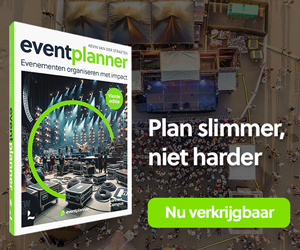Transcript
We all know by now what event ROI is, but how do you take control of your event data to have real-time insights into how your event performs? My studio guest, Bill Bosak is an expert in the field of data and analytics at etouches.
Hi Bill, welcome to our studio.
Hey Kevin, thanks for having me today.
We’re going to talk about return on investment, but maybe to start with, in short, what it is about?
So return on investment has many different definitions based on the type of events various of our clients are putting on. But in general it’s really what’s the overall impact and value that the event is trying to achieve. And many times that is both quantitative and qualitative measures. The qualitative being ones that we indirectly measure through surveys. And the quantitative aspects are the things that we tend to be able to measure directly. Such as sales leads that convert into revenues downstream.
But in the event industry there are a few challenges when it comes to ROI. It seems logical to do such a thing, but in practice for a lot of organizers, it’s very difficult to get track of the data to get the analytics there. What is your experience with that?
Kevin, excellent point, and that’s been something that… You know, about 20 years ago I worked for quite a number of years with one of the world’s largest event organizers. And this is something we looked at back in those times to be able to communicate to our exhibitors and attendees and sponsors, what the value of the events were. It was in our own self-interest to help them understand what that value was. But it was a very big challenge there. What has changed in the last 20 years has really been the ecosystem in which our events take place. We have marketing automation system. And on the downstream, systems like sales force automation, salesforce.com; those things are CRM systems. That help us track from leads to various engagements at the event to eventual sales. So those aspects have definitely changed the game a bit. The other big factor has been the rise of the event technology, the things that we’re using during the events to capture more data. Wearables, RFID , eye beacons, event apps, that help us better understand, what are people doing at the events, who are they interacting with, who are they engaging with, and what do those activities look like. At least in terms of a year-to-year change, and then tracking those various trends over time.
But doesn’t that lead to a massive amount of data? And then you need to do something with that?
Right, that is one of the key challenges that we’re seeing a lot of our clients struggle with. Is actually to try to find out, what data really matters. There is the phrase obviously ‘big data’… is one that’s become very popular over the last several years. And what’s happened is sometimes people look at too much data. And one thing that we suggest to our clients and we do ourselves is, to really understand: what am I trying to do with my event? Let me back it up and talk to my stakeholders in my event. Some of my representative attendees, sponsors, exhibitors, but also people who are giving me budgets to do my event. And once we get clarity on those objectives, it then becomes a little easier for us to figure out what data points help us tell that story about success or status, and how we are achieving on those various objectives. So rather than try to drink from the end of the fire hose, which is that proverbial phrase, with so much data coming off of events is to be more choosey and be more selective about what we’re doing. But also put in place the mechanisms to capture those key pieces of data that we need. So if it is something about booth visits, let’s make sure we have a means to capture that. Whether that’s through scanning, or through beacon technology. If it’s dwell time, if it’s Q&A sessions, if I’m trying to track the impact of my speakers at the event. Sometimes I’m spending quite a lot of money on my keynote speakers. Well, am I doing a survey about people specific to that keynote speaker? Did they have an impact more or less than the average impact of one of my session speakers? So, based on what you are trying to achieve with that event, there are slices of data you want to spend more attention to.
At etouches, you guys did built a solution to handle all this data to come up with real-time insights of an event.
That is correct, Kevin. One thing we did was starting about a year ago we went and did a survey to confirm our hypothesis of what we were hearing from a few of our clients. We wanted to make sure that we reached out more broadly. And we identified three common themes that we needed to address, and one was with so many moving parts in modern events, the ability to get the status of all those various parts was a trick.Two, that I had a lot of stakeholders in my event, and trying to tell them what success looked like and really what were the objectives of my event. There was often a lack of clarity around that at some points in time. Usually we knew how many type of people we wanted to get there. Maybe we knew how many ticket sales we wanted to do. But there were lots of other bits that people would come and ask about. That people were sometimes not clear about that it was much better to be clear and upfront. Because that helped them deal with the third issue, which was data overload. And that was where people might have something on a sticky note, to a spreadsheet, to a variety of spreadsheets to lots of different vendor data sets coming in, Access databases everywhere and trying to spend all their time to piece that together and parse out answers to what people were asking them. And we found most of our colleagues and clients were spending so much time trying to assemble the data that they were being robbed of the time to actually have the impact and to do the job that they loved to do. And they became slaves to the data and splicing that all together. So what we created was an integrated solution that sits on top of our platform and takes in data from our mobile applications, takes in data from our registration systems. And combines that into real-time dashboards where the data is always integrated, it’s always up-to-date and it tells a story around what are the key value drivers, it tells you the status of where you’re at it lets you drill down to spot what those challenges might need to be. So you know on your event team where you might need to reallocate your resources and your time to take action. And which things are otherwise working pretty well. So, it’s a great insight into how the event is happening at any point in time throughout the entire event lifecycle.
So if I understand it correct, it is even possible to see during the event for example, which speakers are performing well where you might need to change things, improve things…
Correct. So, during the event, that’s largely data coming off the mobile application, mobile app. our tapcrowd app. So as you do polls and surveys and Q&A, you’re able to get a real-time feed of that activity coming in and being aggregated to you to know, this speaker is doing phenomenally well, this one maybe not so. And you have a chance then to go out and brief that speaker and say: maybe you need to slow it down maybe you need to address different questions. But you can at least intercept to the degree you can, and try to improve the outcomes. Another example would be with booth visits. You’re able to see in real time what sponsors, what exhibitors are getting more booth visits where traffic might be relatively light. And be able to take action on that, such as sending an SMS message to a segment of your audience to say: ‘don’t forget to visit these exhibitors here, they’re very valuable to you and take a walk down that area’. So you don’t have to wait until the post-show survey comes out and you hear from some very frustrated exhibitors that things didn’t work out so well. You’re able to look at that and monitor that in real time.
That’s really cool. Now you can act before you get a complaint, and yeah, that’s cool. How do you see the future for this evolution?
Where we see this going in the future is in two directions. One is taking a page from where marketing automation is going in the other digital channels.Notably email marketing, website, as well as personalization. So being able to connect people with delegates and attendees at my events to things that matter most to them. Whether that’s a shared connection with someone else they haven’t yet met at the event. Whether that’s a conference session that they may not be aware of. To be able to explore but do that in a more intelligent and effective way. And then tracking the downstream value and putting in place the ability to go and understand better ‘what’s the net impact of these?’
You know, certainly for the typical trade show in the marketing arena, where I’m looking to track sales and downstream impact on my brand. That’s something that is evolving more quickly. For a lot of our internal events and our clients who do internal events, it’s more understanding that it’s a different ecosystem. I mentioned before that that we have the ecosystems of marketing automation and CRM with events happening in the middle and that’s helping us out to do a lot of what we do now for these marketing-centric events. But for internal events that ecosystem is a little bit different. That’s your human resource information systems. Am I seeing people that get the training they needed in these internal meetings and events, to get the recognition that they need? Am I seeing less turnover? Am I seeing them recommend fellow employees to come into the company because they’re proud to be an employee? Those type of more broad stroke value to the company of something that we’re very excited about and look forward to helping lead the charge on as well.
People, our viewers who are interested in your solution and want to know more, where can they find more information?
Yeah, so the etouches.com website is a great place to start. That’s etouches.com. And they can look under the ROI offering. And that’s what we’ve talked about today, which is really providing these real-time dashboards that you can do benchmarking, provide get insight into the status of your event, and understand where you are at any one point in time. And increasingly be able to communicate the value and the impact your event is having for all your various stakeholders.
OK Bill, thank you very much for your time and the insights.
Thank you Kevin for having us today. Wonderful speaking with you.
And you at home, thank you for watching our show. I hope to see you next week.







